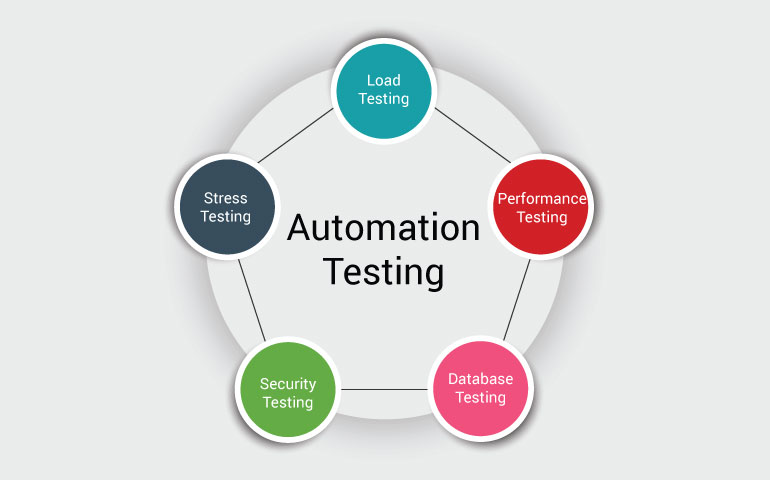The Ultimate Overview to Implementing Automation Testing Successfully
The Ultimate Overview to Implementing Automation Testing Successfully
Blog Article
From Manual to Automated Screening: A Comprehensive Overview to Transitioning Smoothly and Efficiently
In the world of software application testing, the change from handbook to automated processes has become a significantly important change for organizations looking for to enhance performance and precision in their screening methods. The trip from manual to automated screening is not without its difficulties, yet when approached purposefully and with a clear plan in mind, the advantages can be substantial.
Advantages of Automated Testing
Automated screening offers many benefits, improving performance and accuracy in software application development processes. One key benefit is the considerable decrease in testing time. Automated tests can be run simultaneously on several tools and running systems, substantially accelerating the screening phase compared to hands-on screening. This increased effectiveness enables faster feedback on the high quality of the software program, enabling designers to recognize and address issues quickly.
Moreover, automated testing ensures a higher level of precision in spotting problems. Because automated tests comply with predefined scripts, human error is reduced, resulting in more dependable test outcomes. Uniformity in screening is likewise enhanced, as automated examinations carry out the same steps specifically each time they are run. This consistency is important in making sure that all capabilities of the software are extensively checked, minimizing the probability of undiscovered bugs sliding with to production.
Picking the Right Tools

Firstly, evaluate your goals and demands. Comprehend the scope of your project, the technologies entailed, and the capability of your team. This analysis will certainly aid you establish the attributes and capacities you require in your screening devices.
Secondly, consider the compatibility of the devices with your existing systems and procedures. Seamless combination with your present software application advancement lifecycle is important to ensure a smooth change to automation.
Furthermore, assess the scalability and adaptability of the devices. As your testing requires progress, the tools should have the ability to adapt and suit modifications effectively.
Last but not least, consider the support and area around the tools. Durable assistance and an active customer neighborhood can provide useful resources and help when executing automated screening. By thoroughly taking into consideration these aspects, you can pick the right tools that line up with your requirements and established the phase for a successful change to automated testing.
Writing Efficient Examination Scripts

When crafting test manuscripts, it is vital to take into consideration the certain requirements of the software application being tested and make sure that the scripts address all vital performances. Descriptive and clear calling More Info conventions for test manuscripts and examination cases can improve readability and maintainability. Additionally, integrating mistake handling mechanisms within the test scripts can aid in identifying and resolving issues quickly.
In addition, organizing test manuscripts right into modular components can enhance reusability and scalability, lowering redundancy and enhancing effectiveness in test script upkeep. Normal reviews and updates to evaluate scripts are critical to equal developing software program needs and functionalities. By adhering to these principles, testers can produce reliable and durable test scripts that contribute substantially to the success of automated screening procedures.
Integrating Automation Into Workflows
Reliable assimilation of automation tools into existing workflows simplifies procedures and enhances productivity within software development cycles. When incorporating automation into workflows, it is essential to identify repetitive tasks that can be automated to go to this site conserve time and decrease human error. By perfectly integrating automated testing tools like Selenium or Appium right into the software program growth lifecycle, groups can attain faster comments on code modifications, resulting in quicker insect detection and resolution. This assimilation enables constant testing throughout the development procedure, making certain that any kind of problems are determined at an early stage, resulting in greater software application high quality. Additionally, automation can be used to trigger examinations immediately after each code dedicate, providing prompt recognition and maximizing testers to concentrate on more complex circumstances. Appropriate integration of automation devices needs cooperation between development, screening, and operations groups to develop a unified workflow that maximizes effectiveness and effectiveness in providing premium software items.
Guaranteeing a Smooth Change
Successfully transitioning to automated testing includes careful preparation and careful execution to lessen disturbances and make best use of effectiveness in the software advancement procedure - automation testing. To ensure a smooth change, it is important to start by carrying out a complete assessment of the current testing processes and identifying areas where automation can bring the most significant benefits. Involving with all stakeholders early on in the process, including developers, testers, and task supervisors, is crucial for garnering support and buy-in for the automation initiative
Interaction is vital throughout this change stage. Clear communication of the goals, benefits, and expectations of automated testing helps to manage any resistance or issues that may emerge. In addition, supplying appropriate training and resources for employee to upskill in automation devices and methods is important for guaranteeing a successful change.

Final Thought
To conclude, transitioning from handbook to automated screening uses countless advantages, consisting of raised efficiency and reliability. By selecting the appropriate devices, creating effective examination scripts, and incorporating automation seamlessly into workflows, companies can ensure a smooth and successful transition. It is vital to welcome automation as a valuable possession in software application screening procedures to enhance general high quality and productivity.
In the realm of software screening, the change from handbook to Click Here automated processes has actually ended up being a progressively crucial shift for organizations looking for to boost effectiveness and accuracy in their testing techniques. Automated tests can be run at the same time on multiple tools and running systems, dramatically speeding up the screening stage compared to hand-operated screening. Consistency in screening is likewise improved, as automated examinations carry out the same actions exactly each time they are run.To guarantee the effective implementation of picked screening tools, the production of efficient test manuscripts plays a vital role in verifying the functionality and efficiency of automated processes - automation testing. By adhering to these principles, testers can develop efficient and durable test manuscripts that contribute significantly to the success of automated screening processes
Report this page